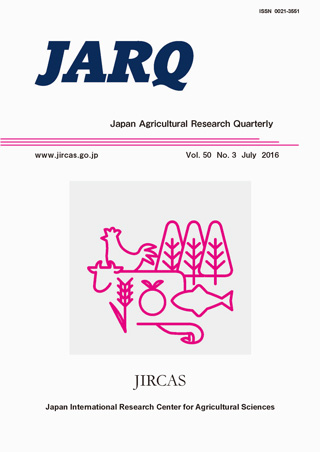To gain a physiological understanding of applying nitrogen to cucumbers (Cucumis sativus L.), three treatment plots of ‘Jinchun No. 5’ seedlings were prepared for three levels of nitrogen application using low (L, 0.0 g·kg−1), medium (M, 0.4 g·kg−1), and high (H, 0.8 g·kg−1) amounts of urea. The specified amount of urea was applied to the dry culture medium of each texting group at three time points: before planting, then at 27 and 43 days after sowing. The following indicators of active oxygen species and senescence were observed in L: soluble protein was low and malondialdehyde (MDA) high in the cotyledons on the 18th day after sowing, and active oxygen species superoxide anion (O2˙¯) and MDA were high, while soluble protein and chlorophyll were low in the 2nd and 3rd leaves on the 42nd and 52nd days. Therefore, no nitrogen application in L resulted in active oxygen generation and membrane lipid peroxidation, as well as accelerated senescence in the cucumber ‘Jinchun No. 5’ seedlings. In contrast, in H, soluble protein was high in the cotyledons on the 18th day after sowing, O2˙¯, hydrogen peroxide (H2O2), and MDA were high on the 42nd, 52nd, and 62nd days, respectively, and soluble protein and chlorophyll were high on the 52nd and 62nd days. These results indicate that an excessive application of nitrogen resulted in active oxygen generation and membrane lipid peroxidation, but also delayed senescence at the same time. The photosynthetic properties and growth of the transpiration rate (E), net photosynthesis rate (Pn), plant height, number of leaves, and shoot fresh weight decreased in L, indicating that active oxygen species, senescence, and E were associated with decreased photosynthesis and growth in the cucumber ‘Jinchun No. 5’ seedlings due to a lack of nitrogen application. Conversely, in H, a decrease in stomatal conductance (gs), E on the 42nd day, followed by an increase on the 62nd day, suggests that in the leaf mid-growth phase of the seedlings, active oxygen species and E were associated with decreased photosynthesis due to excess nitrogen application. However, delayed senescence was associated with maintaining gs, E, and Pn in the late growth phase of the leaves. Moreover, plant height, the number of leaves, and shoot fresh weight showed decreases on the 42nd, 52nd, and 62nd days, respectively, showing the adverse effects of excess nitrogen application on the growth of cucumber ‘Jinchun No. 5’ seedlings.

